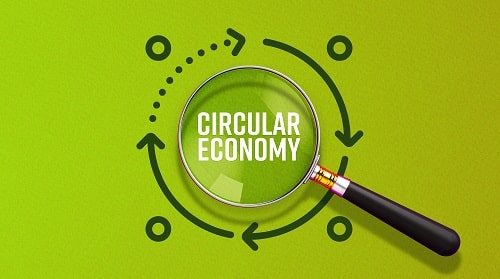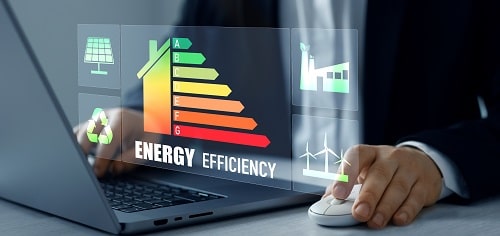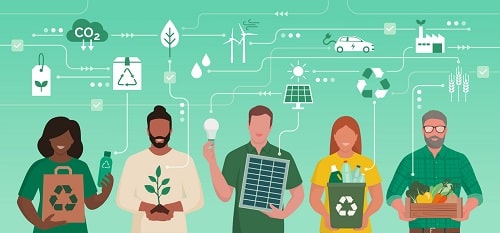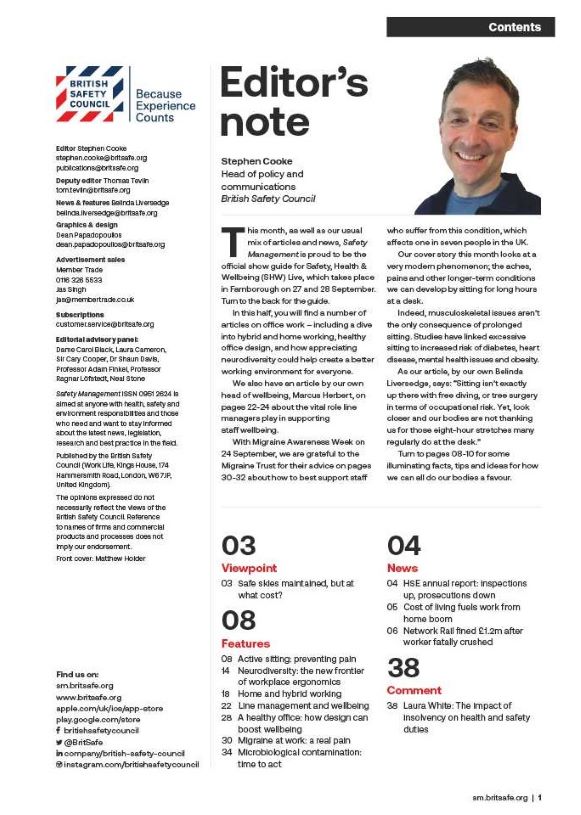Widespread adoption of a circular economy model by business would ensure greater environmental and economic value is extracted and retained from raw materials and products, while simultaneously reducing carbon emissions, protecting the environment and boosting business efficiency and reputation.
Features
How to build circular economy business models
There is a certain expectation among business owners that monetisation should be the number one goal when starting a business. Over time, shifting consumer priorities and demands have forced businesses to reconsider their economic models and move away from the traditional linear approach where profitability takes precedence over the product lifecycle. In its place is a growing sustainability-focused model that many world leaders tout as quintessential to a prosperous economic future – a circular model.
The concept of circularity is nothing new, but it has garnered increased attention and momentum in recent years. As such, businesses, governments and individuals alike have espoused its importance, not just for the environment, but for actively helping businesses sector-wide maintain profitability and a competitive edge in their markets. It’s no secret that the world is changing and everybody – regardless of their areas of focus or specialisms – needs support and guidance on how to transition healthily, without undoing any of their progress.
With this in mind, it’s prudent to explore how businesses can transition to more circular economic models in the coming years.
 Photograph: iStock
Photograph: iStock
Understanding circular business models
While the linear economy operates under a conventional business model where products are purchased, used and then disposed of, a circular business model reimagines how companies approach resource management and production. Traditional linear models follow a ‘take-make-dispose’ pattern, where resources are taken from their sources and manufactured into consumable products, while residuals and by-products are destroyed or accumulate in landfills.
Recent research from the Ellen MacArthur Foundation highlights the transformative potential of circular models. According to their 2024 Global Commitment Progress Report, 87 per cent of original signatories (over 1,000 organisations and over 50 governments) have consistently reported progress against public targets to align to a circular economy for plastics. This suggests a huge opportunity for businesses to innovate and inspire. The World Economic Forum estimates that circular economy strategies could reduce the volume of waste from more than 4.5 billion tonnes to less than two billion, cut landfill waste by 40 per cent to roughly 630,000 tonnes by 2050, and eliminate uncontrolled waste entirely.
The circular business model focuses on extending product lifecycles while maintaining or improving their value. Products and materials are reused, repaired or recycled to lessen the environmental damage and improve the efficiency of the resources utilised. Circular models seek to keep products and materials in use for longer, improve their repairability and increase their recyclability and reuse.
 The circular business model focuses on extending product lifecycles while maintaining or improving their value. Photograph: iStock
The circular business model focuses on extending product lifecycles while maintaining or improving their value. Photograph: iStock
Circular economic business models incorporate factors (environmental, social and economic) to help all parties throughout the supply chain – from raw material producers to end-users – rethink consumption patterns and embrace circular practices, ultimately leading to us buying and selling more sustainably and ethically.
Transitioning strategies for businesses
Regardless of sector, product or service, companies can adopt several strategic approaches to transition from linear to circular economy models that support their business goals and help them maintain profitability.
1. Circular input strategies
Organisations can begin by reimagining their resource procurement. This involves:
- Sourcing renewable, sustainable or recycled materials (‘inputs’) from the economy, rather than ecological reserves
- Identifying waste streams that can become valuable inputs
- Developing material alternatives that reduce environmental impact.
For instance, a manufacturing company might transform industrial by-products into new raw materials, turning potential waste into a valuable resource. In such instances, waste can become an asset, rather than a liability which businesses must pay to dispose of correctly.
2. Product-as-a-service model
Instead of traditional sales where consumers purchase products for a finite time, businesses can offer products through service-based models. This approach:
- Incentivises product longevity
- Encourages maintenance and repair
- Provides better insights into product lifecycle
- Reduces overall resource consumption
- Empowers safer disposal once product lifecycles end.
Technology firms, equipment manufacturers and even office supply companies can implement this model by offering rental or lease options with comprehensive maintenance packages. This is a preferred option for businesses that can’t always afford to make huge upfront investments in equipment or infrastructure.
3. Extended product lifecycle management
This strategy focuses on maximising product usability through:
- Design for repairability
- Upgradability
- Remanufacturing
- Reconditioning
- Reuse and exchange programmes
- Comprehensive recycling programmes.
The construction and technology sectors are particularly well-positioned to implement these approaches, creating continuous revenue streams while reducing waste. This, in turn, allows them to be more competitive in the market, offering attractive prices for customers who are conscious of budgets, especially in recent times.
4. Sharing and collaborative consumption
One of the key concepts of the circular economy is that businesses share assets with other firms, thus improving and optimising their own utilisation. This can take shape by:
- Sharing industrial equipment
- Creating collaborative platforms
- Developing shared infrastructure.
This approach reduces individual capital expenditure and increases overall resource efficiency. For example, construction or logistics businesses may find it more financially and environmentally rewarding to share machinery like forklifts, excavators and heavy lifting equipment.
5. Resource recovery and regeneration
The premise of resource recovery focuses on the final stages of usage, involving the:
- Recovery of built-in materials from end-of-life products
- Creation of closed-loop recycling processes
- Generation of new value from previously discarded resources.
Mobile phone or technology product retailers, for example, can take advantage of this by offering trade-in programmes where customers can hand in old devices in exchange for discounts on new devices, and so on. Older, returned items can be refurbished and resold or stripped for parts and recycled if they cannot be repaired.
Benefits beyond environmental impact
Adopting circular business practices can offer a range of economic, social and operational benefits. Not only is there the environmental benefits of improved reuse and recyclability of products, but businesses can expect to see the following:
- Reduced operational costs and greater efficiency and overall revenue
- Fewer raw materials being sourced and thus lower procurement costs
- Enhanced brand reputation and customer relationships, given that buyers are now preferring to buy from responsible businesses
- Encouraged use of renewable and recycled materials across their supply chains
- Giving back to local businesses and suppliers, reducing supply chain complexity
Increased innovation potential across the workforce - Alignment with emerging sustainability regulations and legislation
- Greater organisational resilience and stability within the company structure, thanks to more reliable procurement.
A 2024 KPMG sustainability report revealed large numbers of companies expressing an interest in implementing robust circular economy strategies in the wake of worldwide net zero targets. However, only 7.2 per cent of the global economy operates on a circular model, so more needs to be done. Moreover, the UK Government’s Climate Change Committee estimates that by 2030, 725,000 jobs could be created in low carbon sectors.
Taking the next step towards circularity
Transitioning to circular business models offers a wealth of benefits far beyond what we may immediately think. Embracing a circular business model can help businesses remain competitive in an increasingly demanding and unpredictable market. By reimagining company resources, their longevity and repurposing potential, companies can create more resilient and efficient organisations.
Certainly in the wake of the COP29 climate summit, a finance deal to help developing countries cut emissions and deal with the effects of climate change sounds promising, as do the pledges and commitments, but it’s up to businesses to implement strategies that will be complementary to their values.
The journey towards a circular economy demands creativity, strategic thinking, and a willingness to challenge traditional business paradigms. Those who embrace this approach will be best positioned to thrive in an increasingly resource-constrained and environmentally conscious global economy.
Chloe Miller is a business graduate and freelance writer, who is passionate about researching industry insights and latest best practices. She specialises in marketing, business and HR content.
Contact her at:
chloe-miller.co.uk
FEATURES

How to build circular economy business models
By Chloe Miller, CC Consulting on 07 April 2025
Widespread adoption of a circular economy model by business would ensure greater environmental and economic value is extracted and retained from raw materials and products, while simultaneously reducing carbon emissions, protecting the environment and boosting business efficiency and reputation.

What does the first year on an accelerated net zero path have in store for UK businesses?
By Team Energy on 07 April 2025
The UK is halfway to net zero by 2050 and on a new, sped-up net zero pathway. In light of this, Graham Paul, sales, marketing & client services director at TEAM Energy, speaks to TEAM Energy’s efficiency and carbon reduction experts about the future of energy efficiency and net zero in the UK.

Aligning organisational culture with sustainability: a win, win for the environment and business
By Dr Keith Whitehead, British Safety Council on 04 April 2025
The culture of an organisation is crucial in determining how successfully it implements, integrates and achieves its sustainability and environmental goals and practices. However, there are a number of simple ways of ensuring a positive organisational culture where everyone is fully committed to achieving excellent sustainability performance.



